
views
Getting Organized

Make sure that you are ready to write. This is your first step towards completing your essay quickly. You will want to make sure your surroundings are comfortable, and that you have all the tools that you will need (computer, paper, etc.) easily accessible. Make sure that the atmosphere is right for you. If you work best in silence, head to the library. If you need a little background noise, try music or working in a coffee shop.
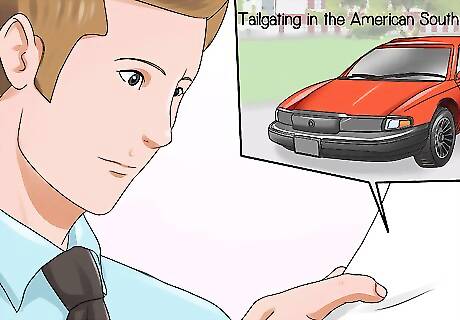
Choose your topic. A successful essay will have a clear focus, so it is important that you clearly define the topic of your essay. It is easier to write about something that interests you, so if at all possible, try to tailor the topic of your essay to something that appeals to your curiosity. For a two-page essay, it's important to choose a narrow topic so that you can adequately discuss it in a short space. If your instructor has given you a clear prompt, decide now how you will approach the question. For example, if the given assignment is "Write an essay on the women's movement. Was it successful?", you will need to decide which side you are going to take. Once you narrow your focus, your essay will be much easier to organize. If you have a much broader assignment, it will be up to you to focus your topic. For example, if your assignment is "Write about something that interests you", you will not want to make the topic of your essay "Sports," especially for a short two-page essay. Choose a very specific topic, such as "Tailgating in the American South."

Know your subject. Make sure that you understand the assigned topic. For example, if you are writing an essay for an English literature class about the novel To Kill a Mockingbird, make sure that you have thoroughly read the book. Think about what you know about the topic. If you need to do any additional research, this is the time. It's unlikely that you will need further research for a two-page paper, but if you aren't sure about the requirements, ask your teacher.

Organize your materials. If you have notes that you have made while researching the topic, make sure they are organized. Put them in an order that makes sense to you so that you can easily find information. If you are planning to use some online resources, try to have the webpages already pulled up, so that you don't have to break your concentration by searching for the information you need. This is a great time to make sure that you also have the instructions for your essay. Did your teacher or professor or boss give you instructions? They did that for a reason. Make sure to follow them.

Organize your thoughts. Are you thinking that maybe you need to take your dog for a quick walk? Go ahead and do that. If something is on your mind other than your paper, try to take care of it quickly if you can. Otherwise, concentrate and focus on your paper. The rest of your life will still be there when you get done. And that time will come much more quickly if you are organized and focused.
Drafting Your Essay
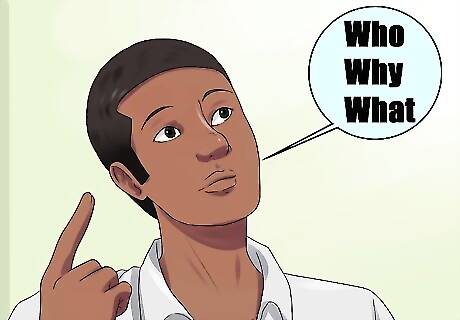
Brainstorm your thesis statement. There are several methods to help you formulate your thesis. One of these techniques is called questioning. To use this approach, think about what your or your reader might like to know about your topic. This can be as simple as starting with basic questions such as who, what, why, etc. For example, if you're supposed to write a two-page essay about something that interests you, think about who your audience is (and how much explaining you'll have to do), what is the most relevant information, and why your topic is interesting to you. Branching is another technique you can use while creating your thesis. Try to imagine your topic as a tree. Write your basic idea in the middle of your paper, and then "branch" out from there, adding ideas and thoughts to your central topic. Another approach to try is brainstorming. To do this, write down anything and everything you know or need to know about your topic. Don't edit yourself, just get some thoughts down on paper. Once you can see your ideas, they will start to take shape. It's often helpful to do this before you try to write a formal outline, as you'll have a better idea of what you want to cover.
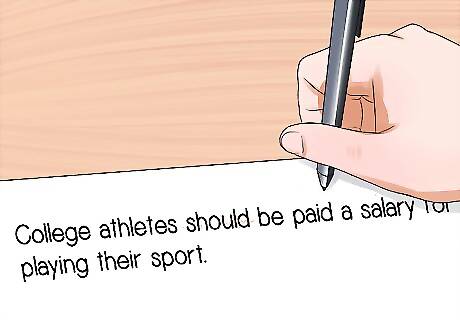
Write your thesis statement. The thesis is the most important part of your essay because it tells your reader exactly what you are arguing. In other words, it clearly and concisely explains the points that you are making in your essay. If you do not have a strong thesis, your essay will be vague and overly general. A strong thesis illustrates that you are going to use specific examples to help illustrate your points. For a two-page essay, keep your thesis specific and narrow. For example, if you were writing an essay about college sports, a poor thesis would be, "College sports are very controversial in many ways." This is too vague, and it does not clearly take a position to argue. It will leave your reader wondering what argument you are making in your essay. An example of a strong thesis for the same topic might be, "College athletes should be paid a salary for playing their sport." This is more successful because it indicates the topic you will address. It's also limited enough that you can adequately discuss it in a two-page paper.
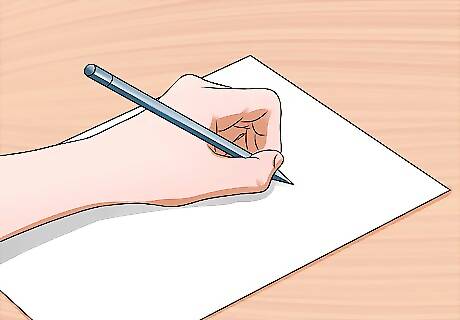
Put your thoughts on paper. Once you have the thesis, which will be the "center of gravity" that guides the rest of your paper, you can put the rest of your ideas down. Creating a detailed and thorough outline can make the rest of the writing process much faster and easier. An outline is a great way to get your ideas down on paper without having to worry that your writing is perfect. Just make sure that you don't get too hung up on this stage -- your essay will develop and evolve as you write it, and that's okay. You don't necessarily need to do a formal outline to start with. Brainstorming or making a list-type outline, where you list out ideas that are related to your topic without putting them in a specific order, can help you know what you want to write about. Once you have listed the ideas that support your thesis, you'll have a better sense of how to organize them.
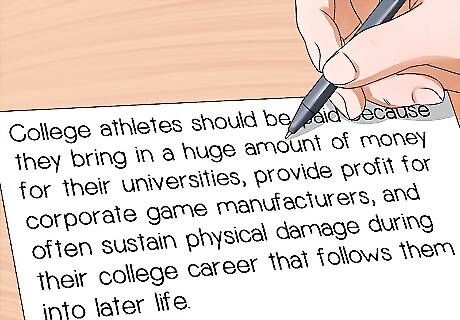
Include specific examples. A successful essay will consist of an introduction, body paragraphs, and a conclusion. Thesis statements will often signal the specific examples you will use in your essay, such as this thesis: "College athletes should be paid because they bring in a huge amount of money for their universities, provide profit for corporate game manufacturers, and often sustain physical damage during their college career that follows them into later life." Note that not all teachers prefer or even accept this type of thesis, which is often referred to as a "multi-prong" or "three-prong" thesis. However, this type of thesis is often appropriate for very short writing assignments such as a two-page essay. If you're not sure what your teacher's preferences are, ask before you begin writing. It's helpful to list specific examples in your outline, so that you know what evidence you have for each point. This can also be helpful to show you whether you have gaps or imbalances in your approach. For example, do you have just one example for one point, but three for another point? It would be better to use roughly the same number of examples per point, or even see if the less-supported point could be incorporated elsewhere.

Cite your sources in your outline. This will save you time during the writing process. Make sure you know which style of citations is required. Some of the most common styles are MLA, APA, and Chicago, and you should make certain to ask your teacher which you should use. One type of citation is known as parenthetical documentation. For this method, you provide information about the source within the text of your essay. An example of this would be, "Brown argues that Einstein's theory of relativity is the most important scholarly achievement of the twentieth century (292)." The name Brown refers to the author of the book in this example, and 292 is the page number where this information is found. There are different ways to cite various sources, so make sure you know how to properly credit all of the sources you plan to use. Sometimes you may be asked to use footnotes or endnotes. While less common in brief essays, some teachers and bosses prefer them. Footnotes and endnotes include more thorough information about the source used. Often, when they replace parenthetical documentation, a Works Cited page is not required.
Writing Your Essay
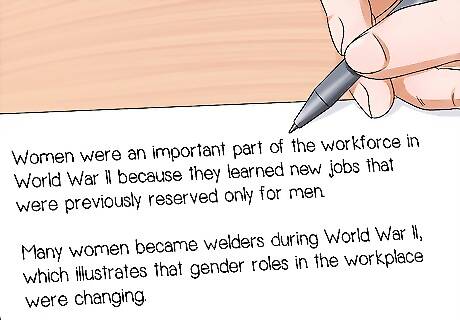
Write your body paragraphs. Now that you are extremely well organized, you're ready to write! This part should go quite quickly if you've made a thorough outline. An essay typically has at least 3 body paragraphs. These should each relate directly to your thesis. Their purpose is to support your argument. Make sure that each body paragraph has a topic sentence. This sentence makes it clear to your reader what each paragraph is about. For example, if you were writing an essay about the labor force during World War II, you might say, "Women were an important part of the workforce in World War II because they learned new jobs that were previously reserved only for men." Include specific supporting examples in each body paragraph. For instance, if you were writing an essay about the labor force during World War II, you might say, "Many women became welders during World War II, which illustrates that gender roles in the workplace were changing."
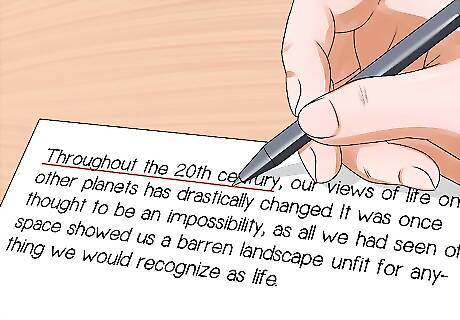
Write your introduction and conclusion last. These are often the most difficult and time consuming parts of writing an essay. An introduction should be a road map for the rest of your paper, and it should also make your reader want to continue reading your paper. Your conclusion "wraps up" the essay, reminding your readers of your argument and its importance. It's often helpful to wait until you've drafted the body of your essay to write the introduction and conclusion, because you'll have a much clearer sense of your full argument and its significance. Start off with a broad contextual statement, but don't make it so broad as to have no relevance. Statements that begin like "Throughout history" or "In modern society" are "fluff" statements and don't provide any real context for your argument. A good way to think of your introduction is as an inverted pyramid. Start with the broad statement that sets the scene, and then narrow down until you reach your thesis. Include your thesis statement at the end of the conclusion. Spend some time on your first sentence. It should be interesting and grab the attention of your reader. Try starting with a fascinating example or an exciting quotation. Use your conclusion to tie together the strands of your argument. In some cases, such as persuasive essays, it's appropriate to include a call to action. You can also return to an anecdote or theme you brought up in the introduction to give your paper great symmetry.

Use clear and concise language. Don't try to sound "fancy". Make clear statements that your reader can easily understand. Always remember, if you can say it in one word, there is no reason to use more. Also, make sure to use words that your reader understands. There is no point in trying to jazz up your essay by relying too heavily on the thesaurus--your points should be clear and easily understood. Watch out for the passive voice. Beginning writers often use the passive voice because it's wordier, which may be mistaken for "fancier." Here's an example of the passive voice: "It is believed by many that today's growing social violence is being caused by video games." Be verbs are often signs of passive voice. Reword it actively this way: "Many people blame video games for today's growing social violence." This is a clear grammatical order: People (subject) blame (verb) video games (direct object). Avoid wordy constructions such as "It is believed that" or "This is suggestive of that." You can communicate these ideas more clearly and concisely: "People believe that" or "This suggests that."
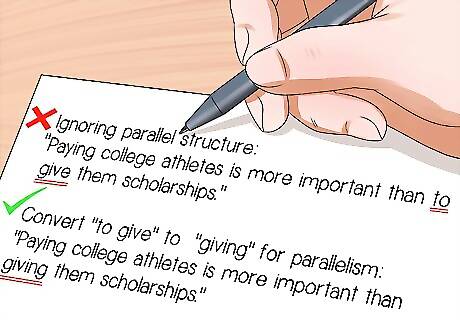
Use appropriate style and tone. Your prompt or course may give you specific guidelines about what's appropriate for your essay. The essay topic can also help determine what stylistic approach to take. Some short essays may be more appropriate in the first-person, using "I." If you've been assigned to write a personal or persuasive essay, the first-person voice is often more personal and effective than using third-person. Aim for parallel structure in sentences. Often, sentences end up sounding clunky if you ignore parallel structure. For example: "Paying college athletes is more important than to give them scholarships." Convert the infinitive "to give" to the gerund form "giving" for parallelism: "Paying college athletes is more important than giving them scholarships."
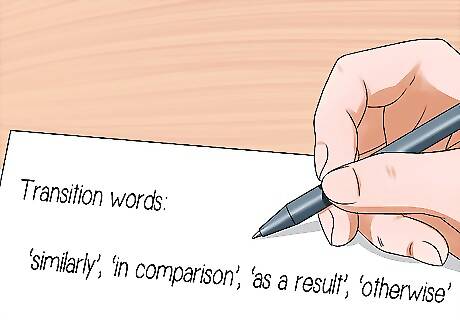
Use transitions. A successful essay clearly shows connections between each paragraph. These transitions illustrate that your points are related to one another, and they are all related to your thesis. Your transitions can either be at the end of a paragraph or integrated into the topic sentence of the following paragraph. Here are some examples of transition words: similarly, in comparison, as a result, otherwise. During the editing process, you can try using several variations to see which best fits your style of writing.
Editing Your Essay

Walk away. You will need to edit carefully, and then edit again. A well-edited paper can often make the difference between a "C" or "B" paper and an "A" paper. But before you begin, give your brain a break. Clearing your mind can help you more objectively evaluate your essay once you begin the editing process. You'll be able to more easily spot errors if your mind is refreshed. Take at least a few minutes to step away from your essay before you come back to it.

Use technology. Of course, you will want to read through your essay, making sure to correct any errors. But don't be afraid to take advantage of spell check. Just remember to also edit on your own. Spell check can't help you with content issues. Be aware that the "grammar check" in word processors is often incorrect about issues, and may even suggest changes that make your writing incorrect. Don't rely only on technology.

Read out loud. Even if it feels strange, try reading your paper out loud to see if it flows nicely and sounds logical. This is also a great time to enlist outside help. Try asking a family member, friend, or classmate if they would mind listening to part of your paper. Even if you just read them the introduction, this can be very helpful in catching problems.

Check your citations. This is the time to make sure that you have properly cited all of your sources. Remember, you need to give credit for direct quotes, specific facts, or any ideas that are not your own. It's important to properly cite sources so that your teacher or boss knows how you conducted your research. It is also important because you want to avoid plagiarism at all costs. When in doubt, cite your source.
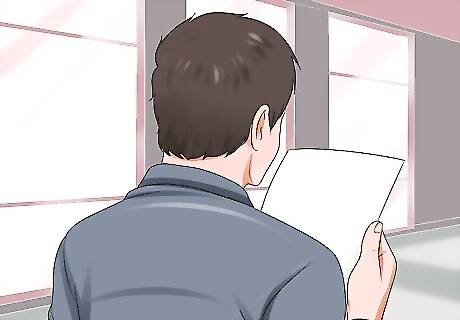
Polish your paper. Go back through and look for any unnecessary words--if you don't need them, get rid of them. A thorough edit can help you to tighten the focus of your paper and ensure that your ideas are highlighted. A polish also helps you to make sure that your paper looks professional and sounds logical and organized.

Write your title. Try to make it creative, but keep it concise. The title should indicate the topic and be direct and easy to understand. During the editing process, keep your eyes open for possible title ideas as you reread your paper. There are several methods for creating a title. One idea is to begin your title with a question, such as "How..." or "Why...". Another method is to choose a specific example that occurs within your paper and use that as a starting point for your title.

Give your paper one final review. Are your points clear? Are your transitions smooth? Are all of your errors corrected? In order to answer these questions, make sure to read every word, and read them slowly. If you're satisfied, your essay is ready to be turned in!


















Comments
0 comment